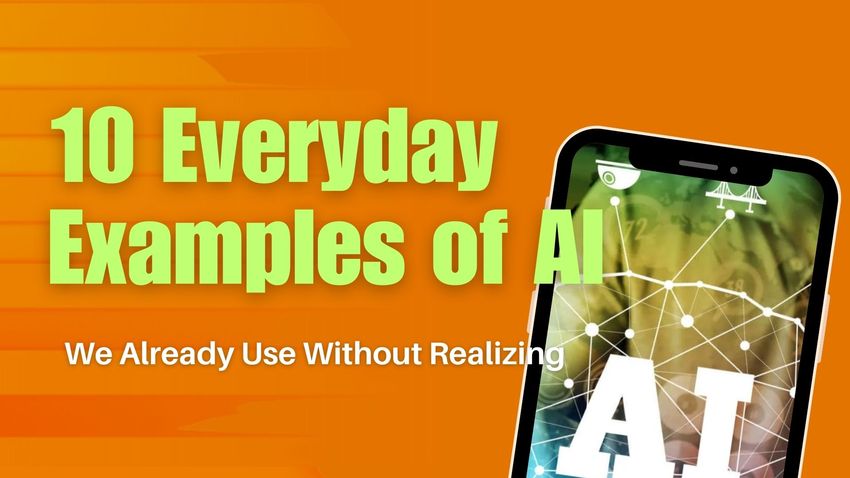Artificial Intelligence (AI) often feels like a futuristic concept—something straight out of sci-fi movies or advanced research labs. But the truth is, AI is already deeply woven into our daily lives. From the way we communicate to how we shop and even entertain ourselves, AI is quietly working in the background, making our lives easier, faster, and more personalized.
In this article, we’ll explore 10 everyday examples of AI you probably use without realizing.
1. Voice Assistants (Siri, Alexa, Google Assistant)
When you say “Hey Siri” or “Okay Google,” you’re directly interacting with AI. These voice assistants use natural language processing (NLP) and machine learning to understand your commands, search the web, send reminders, or even crack jokes.
👉 Behind the scenes, AI continuously improves as it learns your voice patterns and preferences.
2. Search Engines (Google, Bing)
Every time you type a question into Google, AI is at work. From auto-completing your query to delivering the most relevant results, AI algorithms analyze billions of web pages in seconds.
👉 AI also personalizes search results based on your past activity, location, and interests.
3. Social Media Feeds (Facebook, Instagram, TikTok, X)
Ever wondered why your Instagram feed feels so addictive? AI is the answer. Platforms use recommendation algorithms to show posts, reels, and ads tailored just for you.
👉 The more you scroll, the more AI learns about your preferences—making your feed uniquely yours.
4. Streaming Platforms (Netflix, YouTube, Spotify)
Netflix suggesting your next binge-worthy series? That’s AI.
Spotify curating your “Discover Weekly” playlist? Also AI.
YouTube recommending videos you can’t resist? Definitely AI.
👉 These platforms rely on recommendation systems that track your viewing/listening habits and predict what you’ll enjoy next.
5. Navigation & Ride-Sharing Apps (Google Maps, Uber, Lyft)
When Google Maps reroutes you due to traffic or Uber matches you with the nearest driver, AI is behind it. These apps use real-time data, predictive algorithms, and optimization models to calculate the fastest routes and best matches.
👉 Without AI, navigating busy cities or booking a quick ride would be far less efficient.
6. Email Filtering (Gmail, Outlook)
Your email inbox is cleaner thanks to AI. Spam filters use machine learning algorithms to detect suspicious messages and keep them out of your primary inbox.
👉 Gmail’s Smart Compose also predicts and completes your sentences, saving you time while writing emails.
7. E-Commerce Recommendations (Amazon, Flipkart)
When Amazon suggests “Frequently Bought Together” items or recommends products similar to what you’ve viewed, that’s AI.
👉 These personalized shopping recommendations rely on analyzing customer behavior, purchase history, and browsing activity.
8. Banking & Fraud Detection
AI keeps your money safe. Banks use AI to monitor transactions in real-time and detect unusual activity.
👉 If you’ve ever received a message like, “Unusual login attempt detected”, that’s AI flagging potential fraud.
9. Smart Home Devices (Thermostats, Cameras, Appliances)
Devices like Nest Thermostats, Ring Doorbells, or smart fridges use AI to learn your habits, optimize energy usage, and enhance home security.
👉 They adjust automatically—saving energy, improving comfort, and providing peace of mind.
10. Online Translators & Grammar Tools (Google Translate, Grammarly)
When you use Google Translate to decode another language or Grammarly to fix your writing, AI is hard at work.
👉 These tools rely on natural language processing and neural networks to make sense of context, tone, and meaning.
🌟 Conclusion
AI is not just the future—it’s the present. From shopping and streaming to driving and learning, AI has already become a silent partner in our everyday lives. By understanding these everyday examples, you can better appreciate how AI impacts your world—and how it will continue to evolve in the years ahead.


